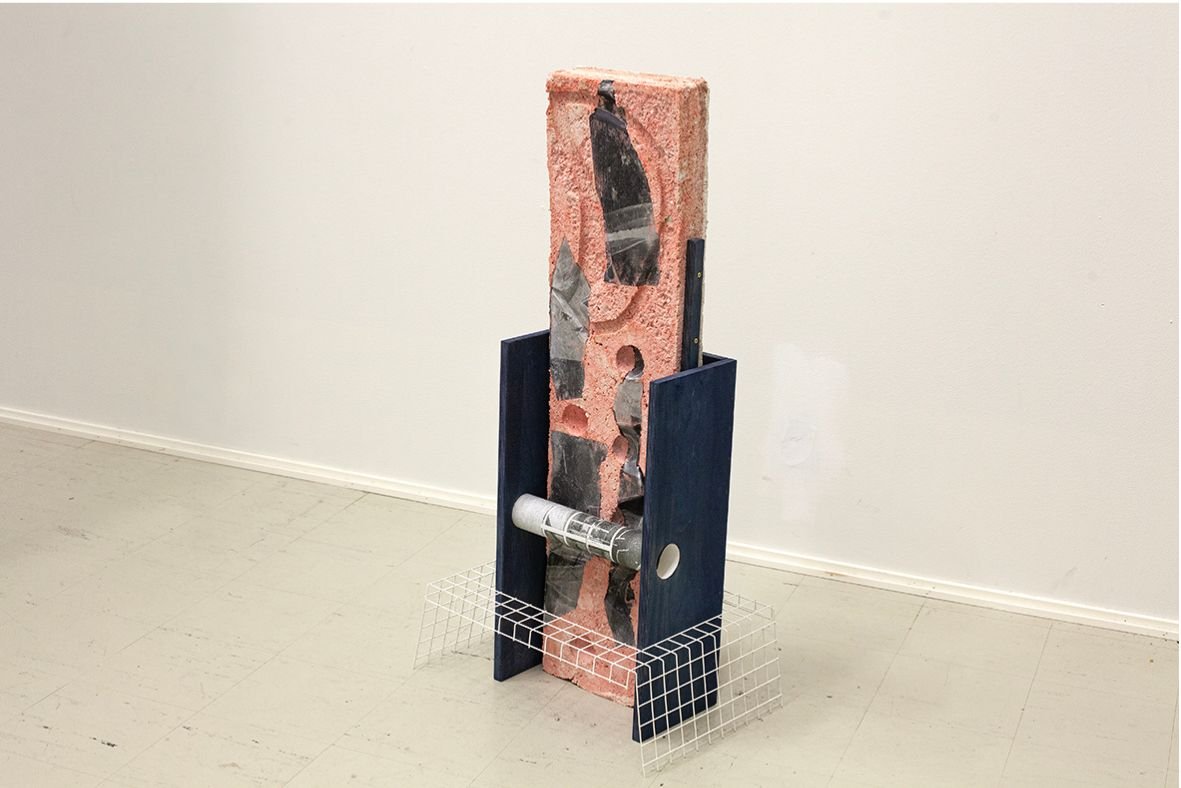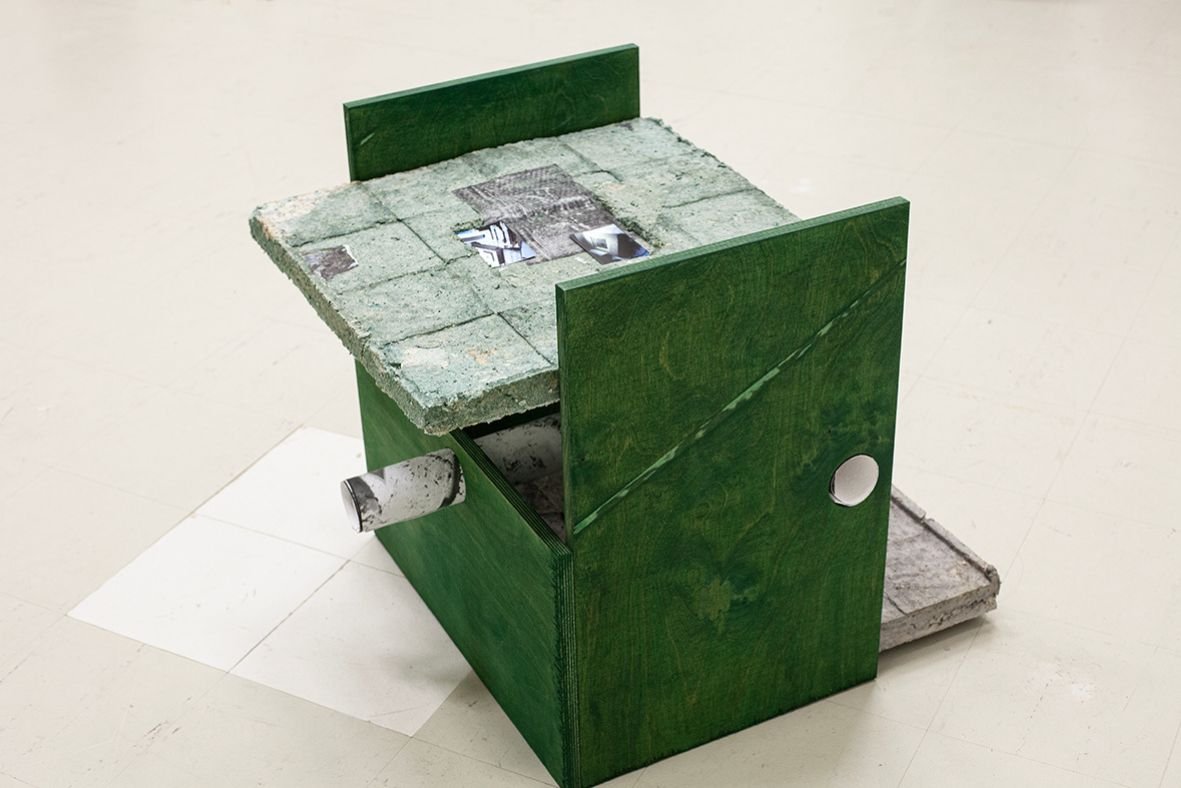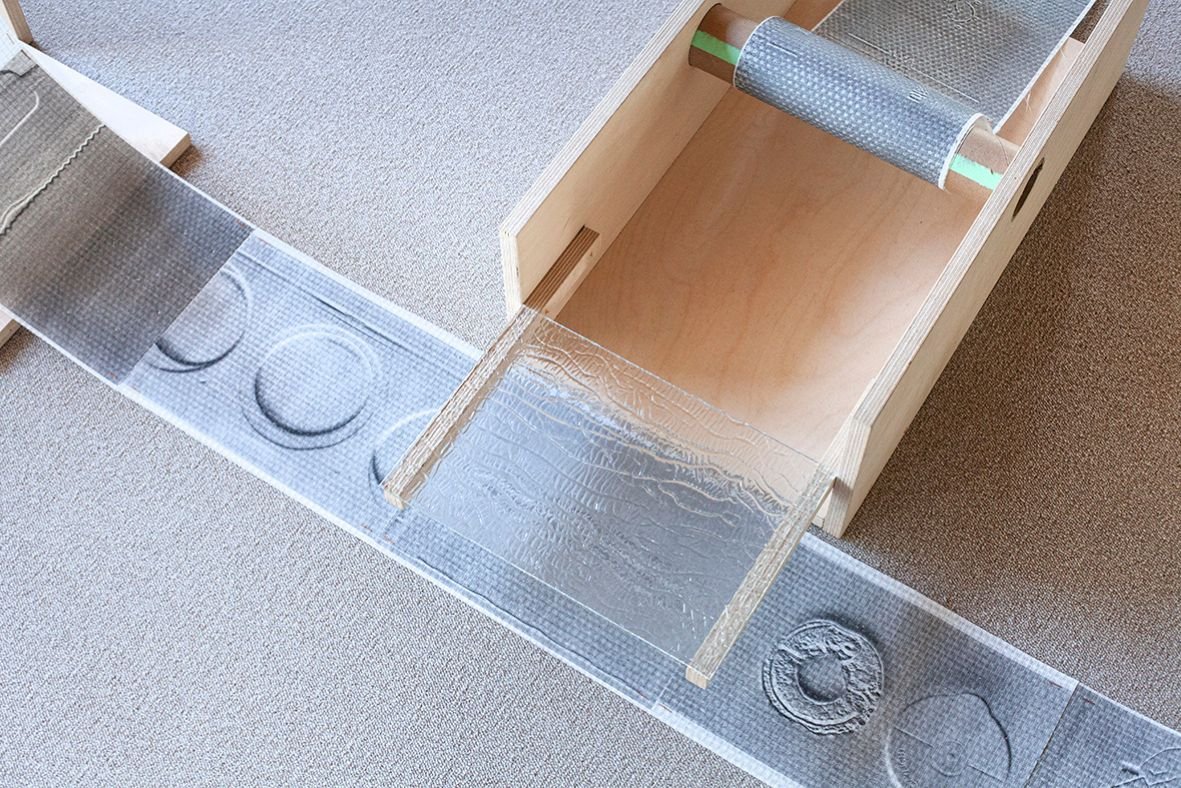2023
Sauli Sirviö on liminal places and limited spaces
Photo: Laura Koskela.
Our 2019 Artist-in-Residence, Sauli Sirviö, has once again returned to the everchanging city of New York. This time around, he spent his time here in residency with Triangle Arts Association.
This is not the first time we get to sit down with artist Sauli Sirviö. Sauli is a frequent New York visitor, but the last time he was here in our company, he was FCINY’s 2019 Artist-in-Residence. This time, his residency is hosted by our friends at Triangle Arts Association, as a part of the international residency program of the Finnish Cultural Foundation.
In our last interview with Sauli here, you can read more about him and his time in New York in 2019.
Sauli started in photography, which he studied at the Lahti Institute of Design before taking up master’s studies at the Academy of Fine Arts in Helsinki, from where he graduated in 2015. He has gradually moved more and more towards three-dimensional expression, creating installations and experiments with found materials. In addition to his artistic work, he is one of the founding members of the artist-run gallery SIC Space in Helsinki, Finland.
Left to right: 1. “Courroie de cou” (2020) silver gelatine print, metal, magnet, wood, spray paint, pp-strap, plastic clip, “Deorcnes” (2020) inkjet print on glass-fibre wallpaper, wood, “Repeat cancelled” (2020) paper, steel mesh. Solo exhibition at SIC Space in Helsinki, Finland 2020.
2. “Kehä 4” (2023) Papier-mâché combined with found materials (found alongside Helsinki beltways 2020-23), plaster, inkjet print on paper, serigraphy, wood, stain paint, painted steel, group exhibition The Apparatus in the Garden in Lahti, Finland 2023.
3. “Kolera-altaan alla” (2023) Papier-mâché combined with found materials (found alongside Helsinki beltways 2020-23), plaster, wood, stain paint, inkjet print on paper, group exhibition The Apparatus in the Garden in Lahti, Finland 2023.
4. “everywhere” (2021) laser print on glass-fibre wallpaper, birch plywood, glass, paper, cardboard, spray paint, group exhibition Avantgarden in Turku, Finland 2021.
About his art, he says:
“I’m quite a visual person, so photography is always there in the background for my work. But I no longer have to use the camera when I explore new places. Instead, I’m able to use my senses to visualize the place by the smells, the sounds, and by sense of touch. I work alone a lot because, to me, art is never that much about exhibitions or showing my work but rather about archiving my past and exploring the present and the future. My art is also a sort of reflection of myself. I feel like I am often in this liminal state of mind, and I’m interested in exploring similar places.”
Along with him in New York, Sauli has his wife and their child by his side.
“Sometimes, when you have kids, you postpone your dreams because of financial reasons. I’m very grateful that I’ve been able to come here together with my family, and I think that if you have the chance to take your children with you to these kinds of opportunities, you should. It can be possible if you have patience as well as the right support, so I’m thankful for my wife who can be with our kid while I’m working”, he says.
The challenges of working with physical materials
Sauli uses pieces and materials from infrastructures that are usually recyclable in his art. Coming to New York, these physical materials have presented some challenges for him. He tells us he felt a sort of horror when he first came to the completely empty studio in New York because all of the materials he usually worked with were back in his studio in Helsinki. The New York studio was kind of a blank canvas.
His solution to this new, empty space was to fill one of the walls with drawings from photos he’s taken during previous New York trips and pictures of upcoming urban planning sketches of New York. Besides these drawings, Sauli has also spent his time in residency examining the soil of New York, especially the shorelines of the East River. During the open studio that Triangle Arts Association arranges regularly, the soil fragments were exhibited next to his drawings, with the intention of creating anachronistic drawings and the fragments working as a statement of the present city.
From Sauli’s open studio. Photo: Laura Koskela.
Something else Sauli has been contemplating is the purpose of gallery spaces and museums, and if his art really needs to be preserved since the materials he uses, he sometimes places back into the city’s infrastructure. He explains that the rotation of materials fascinates him, and is a part of his process when transforming pieces of infrastructure into art:
“When does something transform into art? And when does the art transform back into the material it was? The word preserve is complicated because someone might think I don’t respect my work if I choose not to preserve it. It’s more complex than that. For example, back home, I have collected tons of materials that I’m not sure what to do with, so coming to New York, I knew I couldn’t start collecting more. I have a limited space, and I am more aware of the physical materials I use in my art now”, he explains.
A city and an artist in transition
When asked why he wanted to return to New York, Sauli tells us that nostalgia was a big reason besides the opportunity that Triangle Arts Association residency provides.
“This city is difficult. Every time I come here, it’s a spiritual journey. I’ve been here seven times before, and I know the city quite well, but every time I come here, it takes time to adapt to the chaos, and I always get kind of lost. But somehow, it’s what I need. It’s like the chaos and conditions of the city breed my creativity, like a reset before returning to the quiet and calm suburbia of Helsinki. And I love this city a lot even though it’s so chaotic. There are so many things to see and so much inspiration here”, he tells us.
Pictured are some Sauli’s drawings on the wall of his studio. Photo: Laura Koskela.
Sauli also adds that New York isn’t quite the same since he was last here in 2019 before the pandemic hit. Old friends have moved away, and prices are higher, but he also senses a certain breakdown of the city, which has been interesting to him as it’s a theme he explores in his art: places in a state of transition or change.
On the question if Sauli sees any changes in himself or his art between his last residency period in 2019 versus now, Sauli tells us that there is a difference in the way he works with his art. Before, he used to divide his time relatively equally between fieldwork and spending time in the studio creating the art. During his most recent time in New York, he has spent more time in the studio, and he tells us this way of working is something he also wants to bring back with him to Helsinki.
What is next for Sauli?
Since Sauli has returned home to Finland, he has been working on a solo exhibition at NSFW Gallery in Gothenburg, Sweden, which opens in May 2024, as well as a duo exhibition with Evita Vasiljeva at SIC Space in Helsinki, opening at the end of 2024. In addition, he is also collaborating with UTU-press for his upcoming publication in 2024
If you want to see more of Sauli and his work and upcoming projects, you can follow his instagram here, his website here and FCINY’s socials here.
By: Nela Silfverberg






